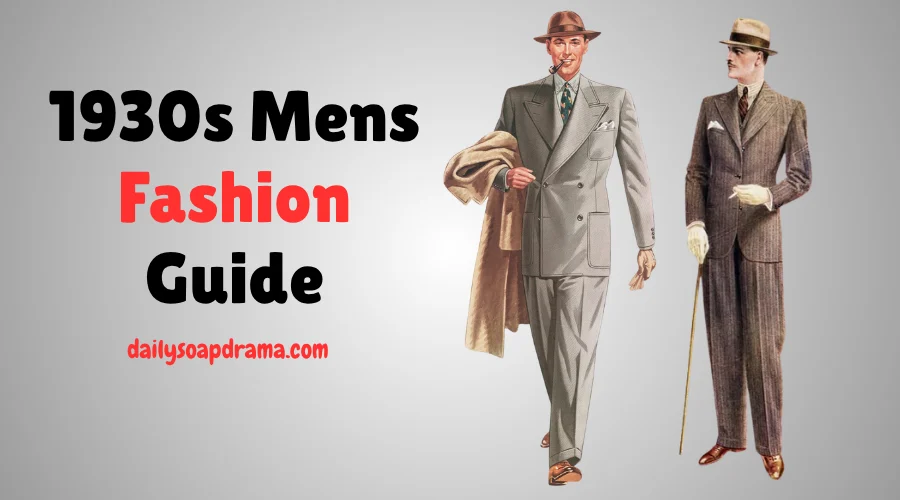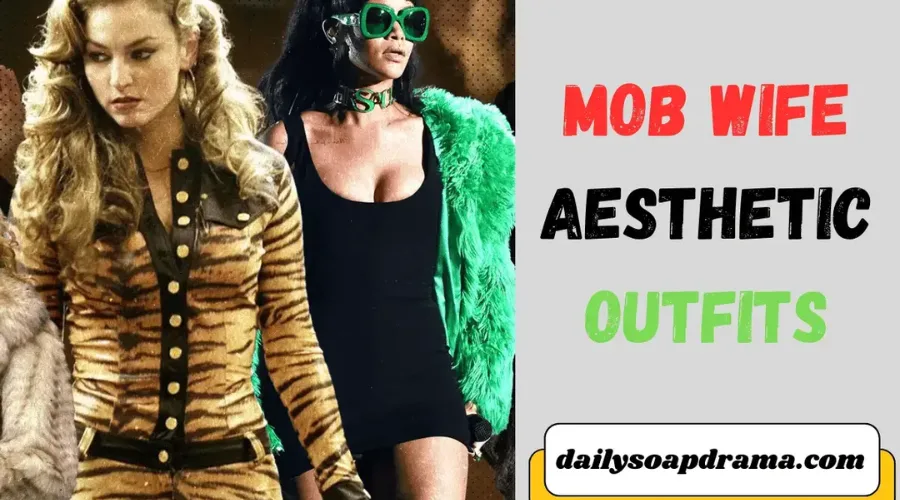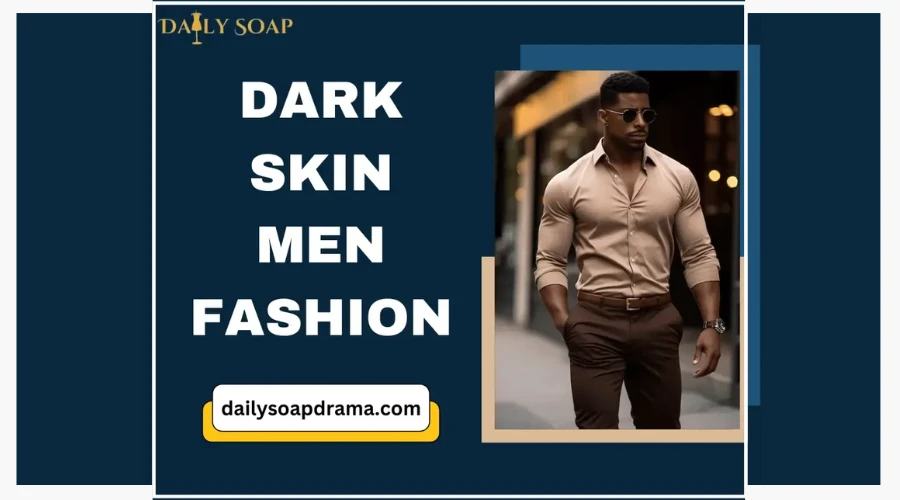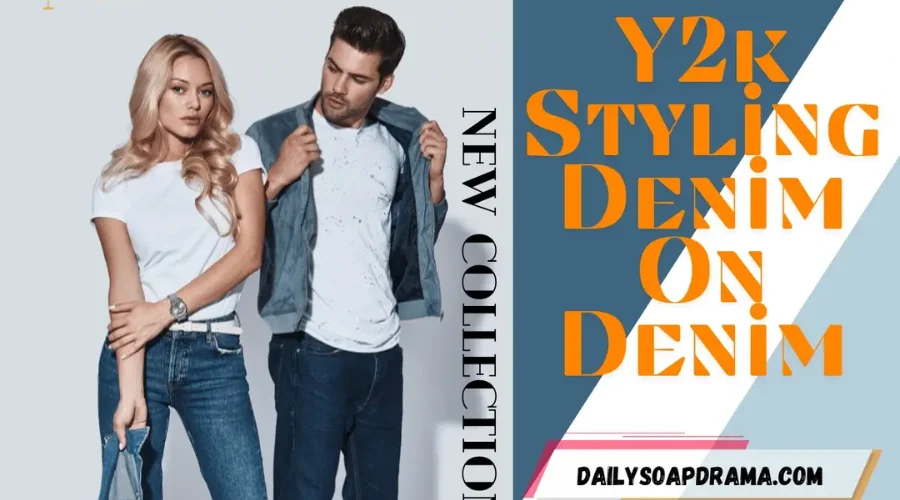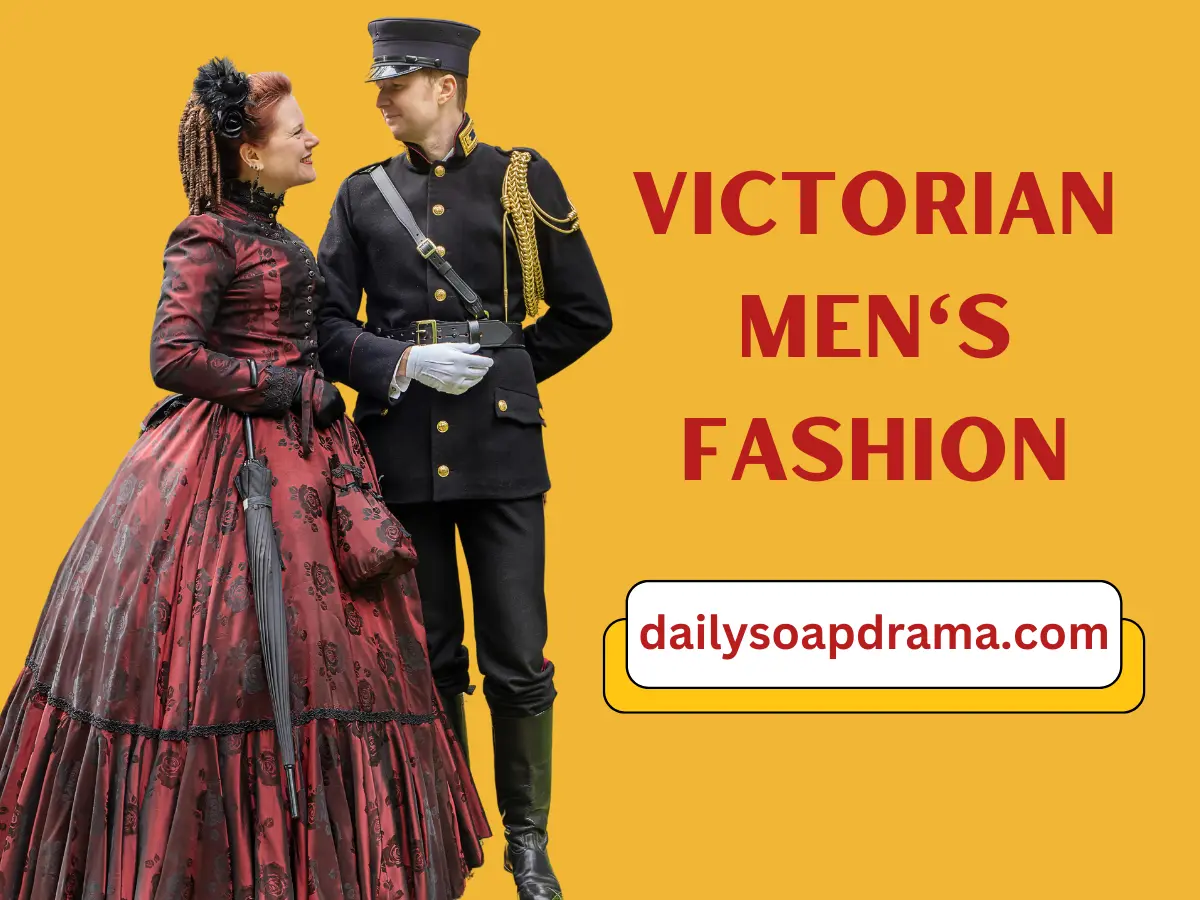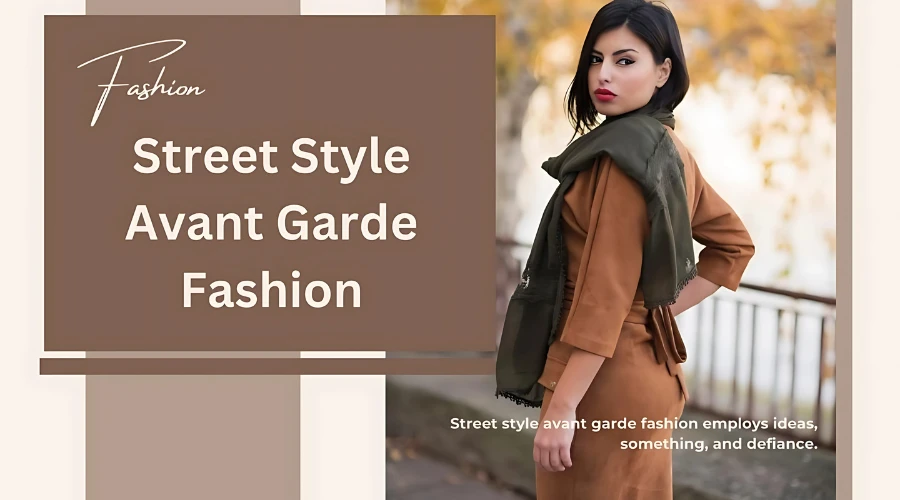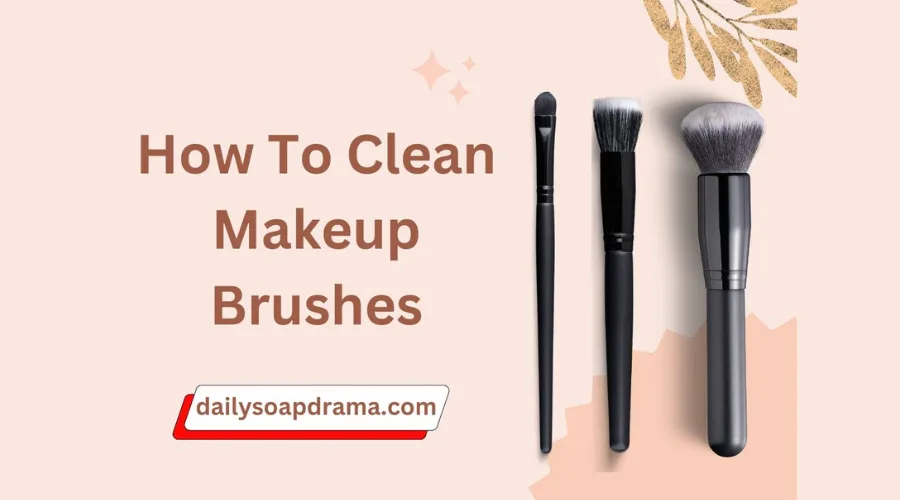Think about a time when there were no video games or smartphones. It's the 1930s! Many people didn't have much money during the period because of the Great Depression. But guess what? Men's style became very important! Clothes weren't just for hiding; they were a way to show off your style, feel good about yourself, and look good, even when things were tough. Everyone wanted to look their best when they watched movies or listened to jazz music. Dress in smooth suits, cool hats, and shoes that you can dance all night in. Let's find out what 1930s mens fashion is all about.
What Made 1930s Mens Fashion So Iconic?
Life in the 1930s wasn't easy. Money was tight. But fashion designers and regular guys got creative! They found ways to look fantastic without spending a fortune. Hollywood movies are like big fashion shows. When men saw stars like Clark Gable or Cary Grant looking incredible cool on the screen, they wanted to copy that look! Jazz clubs were hopping, and the music inspired bright, bold outfits for the dance floor. So, even during hard times, 1930s men's style became a symbol of hope, class, and fun.
Read also: 1920s Mens Fashion Guide
Suiting Up: The Heart of 1930s Men's Wardrobe
The Iconic 1930s Fashion Mens Suits
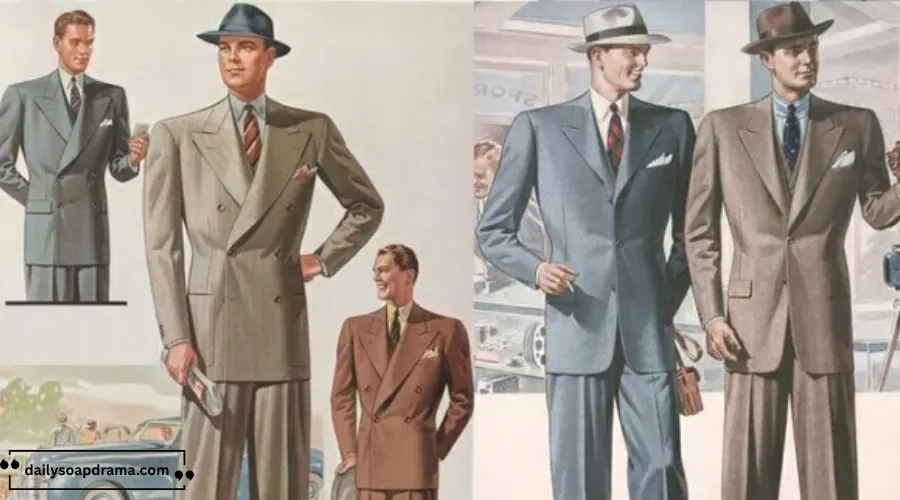
The suit was the most popular thing in 1930s mens fashion. It wasn't just for fancy events a lot of men wore it to work and even when they were out and about! These costumes looked different:
- Broad Shoulders: Jacket padding made shoulders look larger and stronger, like heroes! A man looked powerful and assured.
- Pinched Waist: The V-shaped jacket has a strong waistline. That specified figure was key.
- Wide Trousers: Full, high-waisted pants. These garments featured sharp front creases and were worn with trousers instead of belts. The wide leg appearance was quite comfy.
- Popular Fabrics: Wool was best since it was strong and attractive. Chalk stripes and delicate checks were popular suit designs.
Double Trouble: The Double-Breasted Suit Craze
Popular designs included double-breasted suits. Imagine a coat with two rows of buttons! Though sharp and serious, just one row was secured. The peak lapels often pointed up, making it look stronger and broad-shouldered. This confident looks was perfect for work or a night out. Modern classic menswear style stems from the 1930s.
Single-Breasted Simplicity
Not everyone wore double-breasted. The single-breasted suit (one row of buttons) was popular for everyday menswear. Even though it was less formal, it looked great. These coats typically had notched lapels (a V-shaped form where the collar meets the lapel).
Keeping It Real: 1930s Mens Fashion Casual
Relaxed But Never Sloppy
Even when men weren't wearing a full suit, they still dressed neatly! Casual 1930s style wasn't about sweatpants. It was about mixing simpler pieces smartly:
- Separates are Key: A man can pair high-waisted, wide-leg dress trousers with an advanced sweater or button-down shirt. Sweaters, mostly V-neck and Fair Isle designs, were favored for a casual yet elegant style.
- The Sport Coat Star: A sports jacket was necessary! It was less formal than a suit jacket and typically composed of rougher fabrics like tweed or bolder patterns like windowpane checks or houndstooth. Adding gray flannel or khaki trousers made it the perfect casual smart outfit.
- Denim & Workwear: Durable textiles were preferred for arduous tasks or relaxed periods. Common attire included denim overalls, chambray shirts, and sturdy labor boots. Consider farmers or industry workers—strong and practical! Functional work clothing were essential for daily living.
Read also: Black Men Fashion 2025
Night Owls & Jazz Cats: 1930s Jazz Fashion for Men
Dancing Under the Lights
When the sun went down, fashion got exciting! Jazz clubs were the place to be, and men dressed to impress. This was the era of swing dancing and big bands.
- The Tuxedo Touch: The dinner jacket, now known as a tuxedo, was required for formal evenings. 1930s mens fashion evening wear meant black tie. Tuxedos may have had peak lapels or a shawl collar, usually composed of satin or split silk. A white dress shirt, black bow tie, and cummerbund (a broad belt around the waist) were typically worn with them.
- White Tie Top Formality: White tie was necessary for the most formal function. A black tailcoat, white pique waistcoat, bow tie, and firm white shirt fronts were required.
The Birth of the Bold: Zoot Suits
Later in the 1930s, African American and Latino jazz fans adopted the bold Zoot Suit. This was obvious! The jacket had a lengthy length, large peak lapels, and padded shoulders. The trousers were high-waisted and inflated at the top, with thin ankles. The Zoot Suit, worn with a long watch chain, wide-brimmed hat, and spectator shoes, highlighted excessive flair and statement-making. The fashion was highly innovative for males.
The Finishing Touches: Accessories Made the Man
No 1930s mens outfit was complete without the right extras. Accessories were crucial for looking sharp!
Hat Heaven
Men almost always wore hats when they went out! It was like putting on shoes.
- The Fedora: An truly awesome cap. The felt hat had a tight crown and a medium-sized brim that could be adjusted. Imagine Indiana Jones, smoother! Ideal for suits and casuals.
- The Flat Cap (Newsboy Cap): The casual hat style is usually made of tweed or wool. It was round with a little stiff brim. Perfect with a sweater or sport coat.
- The Homburg: A dressy hat like a fedora with a stiffer brim curled sharply up all around and a center crown dent. Usually worn with a tuxedo or nicest suit.
- The Straw Boater: A lightweight summer hat made of stiff straw with a flat top and brim, often worn with light suits in warm weather.
Neckwear Necessities
Ties were where men could show some personality!
- The Necktie: Wider than ties today! Often featuring bold geometric patterns, art deco designs, or subtle stripes. They were usually tied in a simple four-in-hand knot.
- The Bow Tie: Essential for tuxedos (black bow tie) and popular for adding flair to suits, especially with patterned silk bow ties.
- The Ascot: A wider, scarf-like tie worn loosely knotted under the shirt collar, often for very formal daytime events. Less common for everyday.
Smart Shoes & Other Essentials
- Oxfords: The classic lace-up dress shoe with a closed lacing system (the leather parts over the laces are sewn under the front). Usually in black or brown leather. The cap toe oxford (with a plain toe and a separate piece of leather over the toe) was very popular.
- Brogues: Oxfords or other shoes with decorative perforations (little holes) and patterns. Wingtip brogues (with a W-shaped pattern on the toe) were a stylish choice.
- Two-Tone Spectators: Super snazzy shoes, often in white and brown or white and black combinations. A favorite for summer and jazz fashion.
- Socks: Almost always worn, usually matching the trousers or in a complementary color. Patterns like argyle were popular.
- Pocket Squares: A folded piece of cloth (silk or linen) peeking out of the jacket breast pocket. It added a perfect splash of color or pattern. Pocket squares were a must for a finished look.
- Suspenders (Braces): Essential for holding up those high-waisted trousers! Belts were much less common than today. Suspenders came in all sorts of colors and patterns.
- Cufflinks: Used to fasten the cuffs of dress shirts, adding a touch of shine and personality.
What Were 1930s Clothes Made Of?
Fabric choice was super important for comfort, durability, and style.
- Wool: The absolute champion! Used for suits, coats, trousers, and sweaters. It was warm in winter, breathed well, and draped beautifully. Worsted wool (smooth and fine) was best for suits.
- Cotton: Used for shirts (especially oxford cloth button-downs), summer suits, casual trousers, and underwear. Chambray (a lighter, softer denim-like fabric) was popular for work shirts.
- Rayon: A new man-made fabric in the 1930s. It was cheaper than silk but could imitate its shiny look for ties, linings, and some casual jackets. It was sometimes called artificial silk.
- Tweed & Flannel: Rough, textured wool fabrics. Tweed was great for sport coats and country wear. Flannel (softer and brushed) was popular for trousers and suits, especially in grey.
- Linen: Used for very lightweight summer suits and shirts because it breathed so well, but it wrinkled easily!
- Leather: For shoes, belts (less common), gloves, and sometimes jacket accents.
Hollywood & Heroes: Who Set the Trends
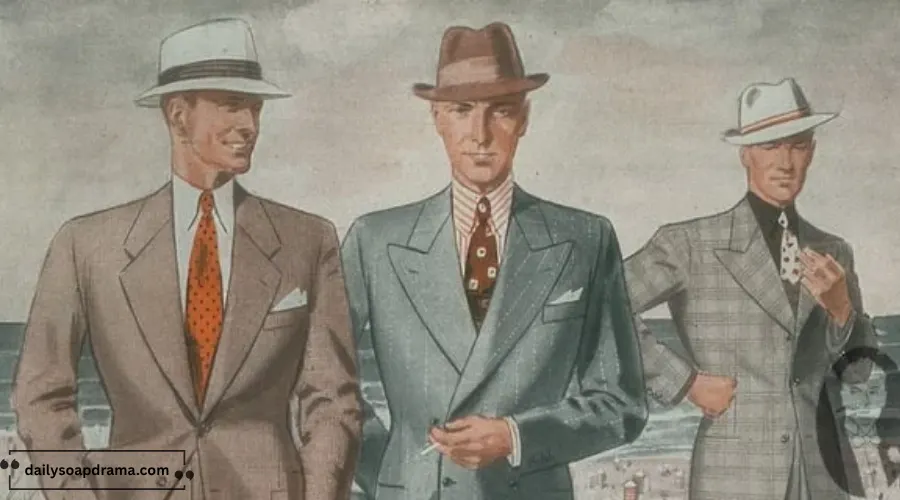
Movies were like the Instagram of the 1930s! Everyone watched them and wanted to dress like the stars.
- Fred Astaire: The dancing king! He made suits look effortless and elegant, even while tap-dancing across the ceiling! His tailored suits, often by bespoke tailors like Anderson & Sheppard, were perfection. He showed how clothes should move with you.
- Cary Grant: The definition of suave cool. Whether in a sharp double-breasted suit or a relaxed sport coat, he always looked immaculate and confident. He mastered timeless elegance.
- Clark Gable: Known for rugged charm. Famous for not wearing an undershirt in the movie It Happened One Night, which supposedly caused undershirt sales to drop! He made simple sweaters and open-collar shirts look masculine and appealing.
- Gary Cooper: Embodied strong, quiet American style. Often seen in well-cut, practical suits and sportswear.
Why We Still Love 1930s Style Today
The Enduring Legacy of 1930s Menswear
The 1930s mens fashion influence is everywhere in modern clothes! Designers constantly look back for inspiration:
- The Return of the Wide Leg: Those high-waisted, wide-leg trousers are back in style on runways and in stores.
- Double-Breasted Dominance: Double-breasted suits and jackets are a major trend again, looking sharp and confident.
- Sharp Tailoring: The focus on a strong shoulder and a defined waist (that V-shape!) is still the goal of a great suit.
- Accessory Appreciation: Fedoras, pocket squares, and nice leather shoes are timeless ways to elevate any outfit.
- Mixing Smart & Casual: The 1930s idea of wearing separates smartly (like dress trousers with a sweater) is exactly how many men dress today for smart casual events.
How to Add a Touch of 1930s to Your Wardrobe
You don't need a full costume! Try these easy ideas:
- Try a Wider-Leg Trouser: Look for pants that aren't super skinny. Even a straight leg feels more vintage.
- Add a Pocket Square: It's the easiest way to look instantly sharper. Fold it simply and pop it in your jacket pocket.
- Consider a Fedora (or Flat Cap): If you like hats, give one a try! It adds instant old-school cool.
- Choose a Bold Tie (or Bow Tie): Look for ties with geometric patterns or wider widths.
- Focus on Fit: The biggest lesson? Clothes that fit well (especially in the shoulders and waist) always look best, just like in the 1930s. Maybe skip the giant shoulder pads though!
Read also: Semi Casual Attire Men
Where to Find the Look Today: Vintage and Reproduction
Where to buy 1930s menswear? Thank goodness 30s style is ageless and offers options:
For authentic vintage clothing, choose from specialty stores and auction sites like eBay and Etsy. Be prepared for thorough searches and fragility issues. Vintage clothing guidelines: check seams, fabric quality, and damage.
Reproduction Brands
Several companies specialize in meticulously recreating 1930s garments using original patterns and fabrics:
- The Armoury (Collaborations)
- Bronson MFG (Workwear focus)
- Vintage Trends (Wide range)
- Dapper Classics
- Pike Brothers
Expert Insight: The 1930s mastered the art of combining elegance with practicality, even under duress, notes Amelia Thornton, Curator of Textiles at the Fashion History Museum. The focus on strong shoulders, defined waists, and quality accessories created a silhouette that remains powerfully masculine and stylish. Understanding the context – the Depression, Hollywood's rise – makes the enduring appeal of these styles even more remarkable. It was fashion as resilience.
(FAQs) 1930s Mens Fashion
What did most ordinary men wear every day in the 1930s?
Most men, especially working-class guys, wore practical clothes. For work, this might mean durable workwear like overalls, sturdy trousers, chambray shirts, and boots. Off work, they might wear their Sunday best suit if they had one, or separates like dress trousers with a sweater or a sports jacket with less formal pants. High-waisted pants and suspenders were standard. Hats were worn almost everywhere outside.
How did the Great Depression affect men's fashion?
Money was incredibly tight. This meant:
- Mending & Making Do: Clothes were repaired and patched to last as long as possible. Frugal fashion was essential.
- Less New, More Re-wearing: Men bought fewer new clothes and wore what they had for longer.
- Simpler Styles (Sometimes): While suits remained important, details might be simpler, and fabrics less luxurious.
- Creativity: People got creative with accessories or small changes to refresh old outfits. Hollywood offered escape and inspiration.
- Durability Focus: Clothes had to be well-made and durable. Long-lasting fabrics like wool were prized.
What colors were popular for men in the 1930s?
Suits were mostly in conservative colors: Navy blue, charcoal grey, dark brown, and black (for very formal wear). For casual wear like sport coats, sweaters, and shirts, more colors appeared: Cream, tan, olive green, burgundy, mustard yellow, and light blue. Patterns like stripes, checks, and geometric designs added interest, especially on ties and sport coats.
Can I wear a true 1930s style today without looking costume-y?
Absolutely! The key is subtlety and mixing:
- Focus on One Piece: Wear one strong 1930s-inspired item (like wide-leg trousers, a double-breasted jacket, or a fedora) with your modern basics (a simple t-shirt, plain sweater, modern sneakers or boots).
- Modern Fabrics & Fits: Choose pieces made with modern fabrics that have the vintage look but feel current. Avoid super-heavy wools or stiff collars unless you're going for a specific look. Ensure shoulders fit naturally (no extreme padding!).
- Accessorize Wisely: A pocket square, a vintage-style tie, or a cool hat can add the vibe without going overboard.
- Confidence is Key: Wear it like it's totally normal (because it looks cool!).
Conclusion
Exploring 1930s mens fashion reveals a world where style was an essential form of self-respect and expression, even amidst adversity. From the sharp lines of the double-breasted suit to the practical charm of the flat cap, from the sleek hold of pomade in popular men's hairstyles in the 1930s to the gleam of polished oxfords, every detail mattered. It was an era that mastered the balance between elegance and practicality, creating looks that remain deeply influential. Understanding what did men wear in the 1930s isn't just about nostalgia; it's about rediscovering timeless principles of fit, quality, and presentation. Whether you incorporate a single element like a wider tie or high-waisted trousers, or fully embrace the vintage aesthetic, the spirit of the 1930s gentleman – resilient, polished, and undeniably stylish – offers a powerful inspiration for modern men.

